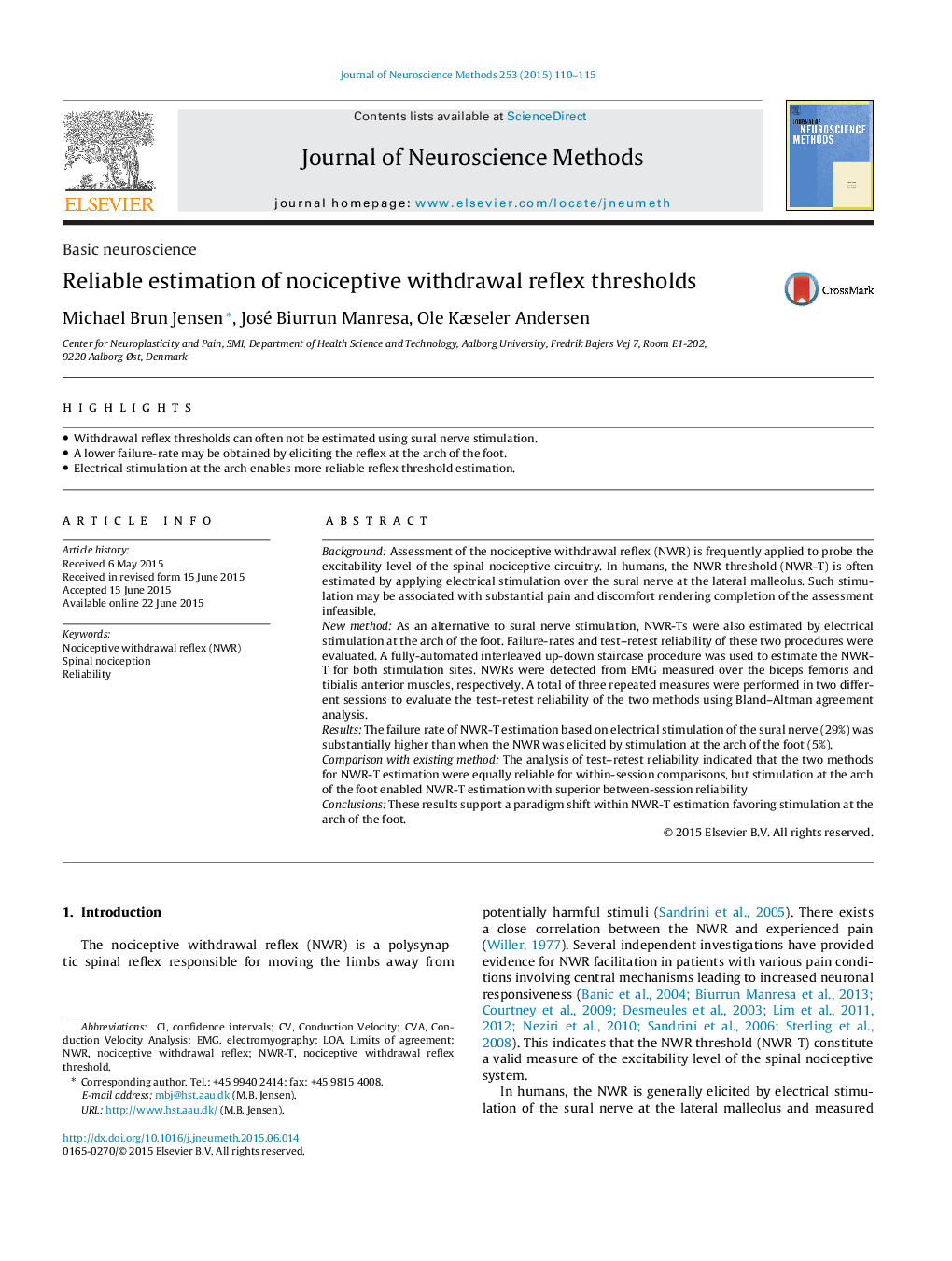| Article ID | Journal | Published Year | Pages | File Type |
|---|---|---|---|---|
| 6268041 | Journal of Neuroscience Methods | 2015 | 6 Pages |
â¢Withdrawal reflex thresholds can often not be estimated using sural nerve stimulation.â¢A lower failure-rate may be obtained by eliciting the reflex at the arch of the foot.â¢Electrical stimulation at the arch enables more reliable reflex threshold estimation.
BackgroundAssessment of the nociceptive withdrawal reflex (NWR) is frequently applied to probe the excitability level of the spinal nociceptive circuitry. In humans, the NWR threshold (NWR-T) is often estimated by applying electrical stimulation over the sural nerve at the lateral malleolus. Such stimulation may be associated with substantial pain and discomfort rendering completion of the assessment infeasible.New methodAs an alternative to sural nerve stimulation, NWR-Ts were also estimated by electrical stimulation at the arch of the foot. Failure-rates and test-retest reliability of these two procedures were evaluated. A fully-automated interleaved up-down staircase procedure was used to estimate the NWR-T for both stimulation sites. NWRs were detected from EMG measured over the biceps femoris and tibialis anterior muscles, respectively. A total of three repeated measures were performed in two different sessions to evaluate the test-retest reliability of the two methods using Bland-Altman agreement analysis.ResultsThe failure rate of NWR-T estimation based on electrical stimulation of the sural nerve (29%) was substantially higher than when the NWR was elicited by stimulation at the arch of the foot (5%).Comparison with existing methodThe analysis of test-retest reliability indicated that the two methods for NWR-T estimation were equally reliable for within-session comparisons, but stimulation at the arch of the foot enabled NWR-T estimation with superior between-session reliabilityConclusionsThese results support a paradigm shift within NWR-T estimation favoring stimulation at the arch of the foot.
